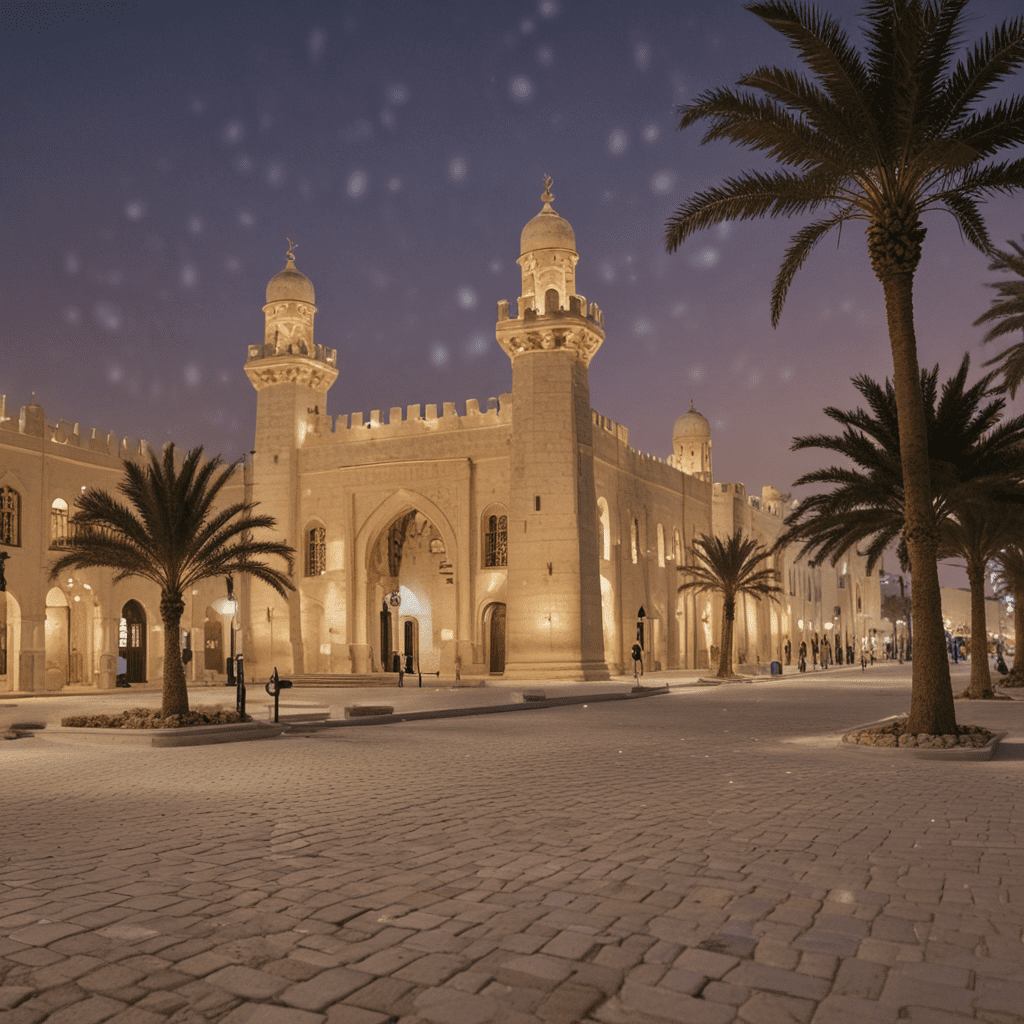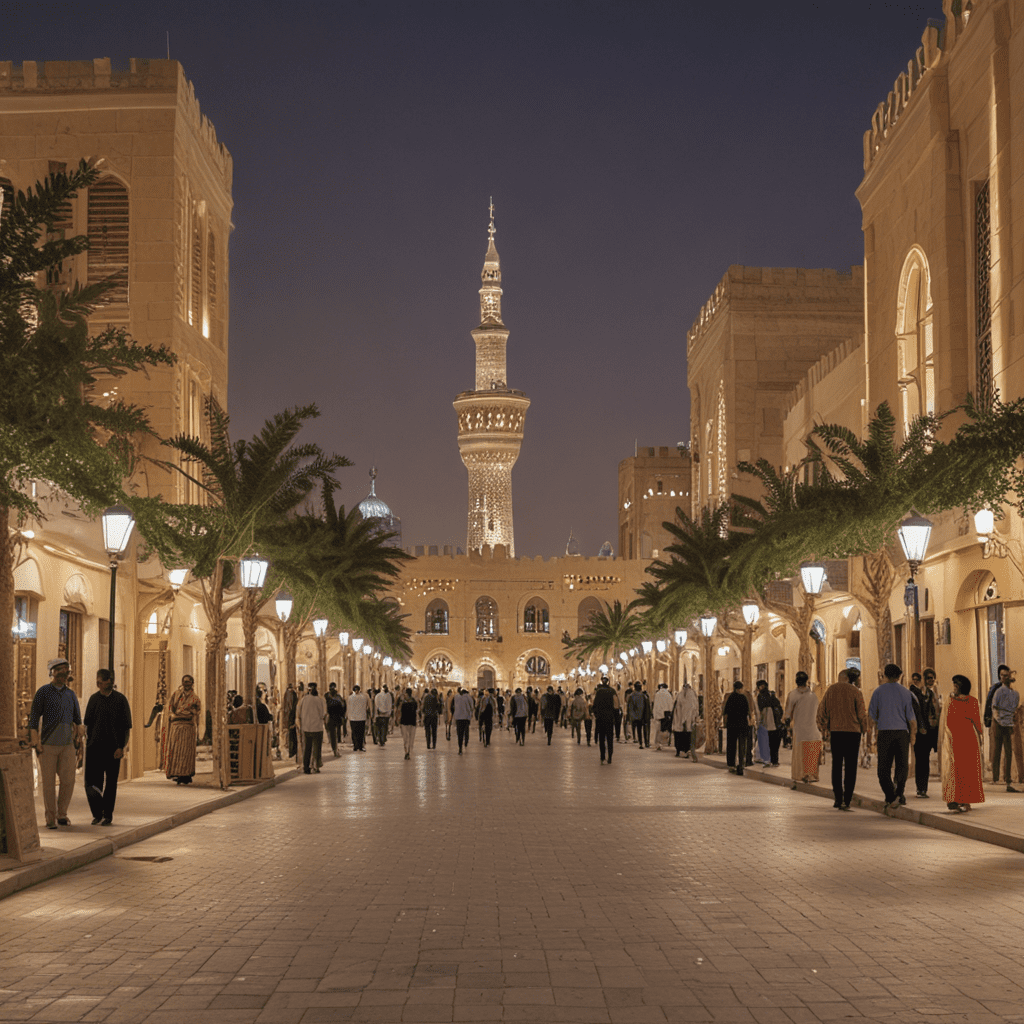
Exploring the Rich History of Bahrain's Ancient Sites
Introduction: Bahrain's Enduring Legacy
Bahrain, an enchanting island nation in the Arabian Gulf, boasts an illustrious past. Its strategic location has shaped its history, attracting civilizations and leaving behind an enduring legacy. Home to some of the oldest civilizations, Bahrain's ancient sites provide a captivating glimpse into the region's rich tapestry.
Dilmun Civilization: The Cradle of Bahrain's History
The Dilmun civilization flourished on the shores of Bahrain from the 3rd millennium BC. Known as "the land of immortality" by the Mesopotamians, Dilmun played a vital role in trade, connecting Mesopotamia to the Indus Valley civilization. Archaeological excavations have revealed remnants of Dilmun temples, burial mounds, and settlements, offering valuable insights into this enigmatic civilization.
The Tylos City: A Thriving Urban Center
In the 6th century BC, the Tylos city emerged as a prominent hub in Bahrain. Serving as the main port for the region, Tylos played a pivotal role in international trade. Excavations have unearthed the remains of its impressive city walls, temples, and residential areas. The site provides a vivid testament to the cosmopolitan nature of ancient Bahrain.
The Qal'at al-Bahrain Fort: A UNESCO World Heritage Site
Overlooking the Manama skyline, the Qal'at al-Bahrain Fort stands as a majestic guardian of the past. This awe-inspiring site, dating back to the 6th century BC, is recognized by UNESCO as a World Heritage Site. The fort has been reconstructed over several periods, showcasing the architectural evolution of Bahrain. Within its walls, visitors can explore remnants of Dilmun settlements, Portuguese fortresses, and other relics from various civilizations.
The Saar Burial Mounds: Uncovering the Past
Located near the town of Saar, these enigmatic burial mounds offer a glimpse into Bahrain's ancient funerary practices. Over 200 mounds, ranging in size, dot the landscape. Excavations have unearthed valuable artifacts and human remains, providing insights into the social structure and burial customs of the Dilmun period. The Saar burial mounds serve as a testament to the enduring traditions of ancient Bahrain.
The Barbar Temple: A Sacred Space
Nestled in the village of Barbar, the Barbar Temple stands as a testament to Bahrain's ancient religious practices. Dating back to the 3rd millennium BC, this enigmatic site was dedicated to Enki, the Sumerian god of water and wisdom. The temple complex comprises several structures, including a central shrine, offering tables, and a water reservoir. The Barbar Temple offers a glimpse into the spiritual beliefs and practices of the ancient Dilmun civilization.
The Burial Grounds of A'ali: A Cemetery of Kings
On the outskirts of Manama, the Burial Grounds of A'ali provide a fascinating glimpse into the royal traditions of ancient Bahrain. This expansive necropolis, dating back to the 4th century BC, is believed to have been the final resting place of kings and high-ranking officials. Over 10,000 burial mounds dot the landscape, offering a testament to the elaborate funerary customs of the Dilmun period. The Burial Grounds of A'ali provide valuable insights into the social hierarchy and mortuary practices of ancient Bahrain.
The Muharraq Fort: A Military Stronghold
Overlooking the city of Muharraq, the Muharraq Fort stands as a formidable testament to Bahrain's military past. Built in the mid-19th century, this grand fort served as a strategic defense point against foreign invasions. Its imposing walls, towers, and cannons have witnessed countless battles. Today, the Muharraq Fort houses a museum, offering visitors a glimpse into Bahrain's military history and the fort's architectural significance.
The Khamis Caves: A Natural Wonder
Located near the village of Khamis, the Khamis Caves offer a unique natural attraction. Formed over thousands of years by the erosion of limestone cliffs, these spectacular caves provide a sanctuary for wildlife and offer breathtaking views. Visitors can explore the intricate tunnels and chambers, marveling at the natural beauty of Bahrain's landscape. The Khamis Caves serve as a reminder of the island's geological heritage and its connection to the surrounding Arabian Peninsula.
Preserving Bahrain's Heritage: Ongoing Efforts
Recognizing the importance of its ancient sites, Bahrain has made significant efforts to preserve and protect its heritage. The establishment of the Bahrain Authority for Culture and Antiquities (BACA) has been instrumental in safeguarding archaeological sites, museums, and cultural landmarks. BACA has undertaken extensive restoration projects, ensuring that Bahrain's ancient treasures are preserved for generations to come.
FAQ
Q: What is the significance of the Dilmun civilization in Bahrain's history?
A: The Dilmun civilization, dating back to the 3rd millennium BC, was a prominent trading hub and is considered the cradle of Bahrain's history.
Q: Which UNESCO World Heritage Site in Bahrain is known for its architectural evolution?
A: The Qal'at al-Bahrain Fort, a UNESCO World Heritage Site, showcases architectural layers from the Dilmun to the Portuguese periods.
Q: What do the Saar burial mounds reveal about ancient Bahrain?
A: The Saar burial mounds offer insights into the funerary practices of the Dilmun period, shedding light on their social structure and religious beliefs.
Q: What natural attraction in Bahrain is known for its intricate caves?
A: The Khamis Caves, located near the village of Khamis, are renowned for their breathtaking tunnels and chambers, providing a glimpse into Bahrain's geological heritage.
Q: How does Bahrain preserve and protect its ancient sites?
A: The Bahrain Authority for Culture and Antiquities (BACA) is responsible for safeguarding archaeological sites, museums, and cultural landmarks, ensuring the preservation of Bahrain's heritage for future generations.


